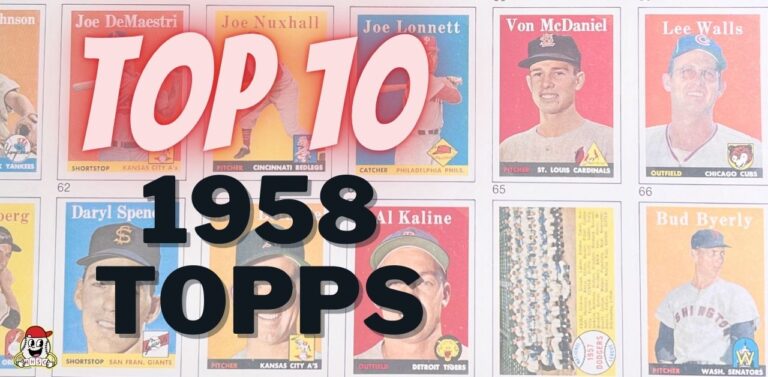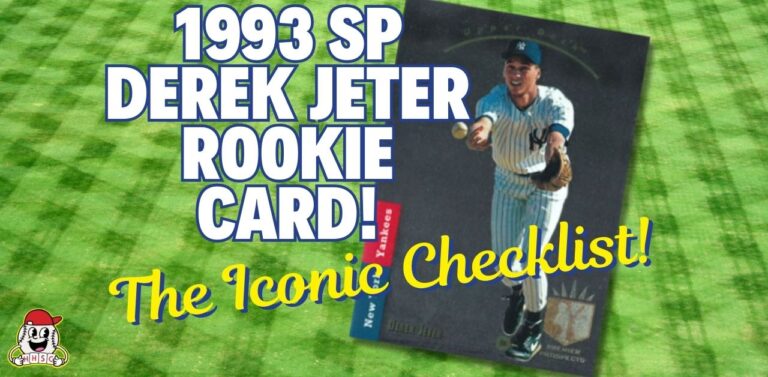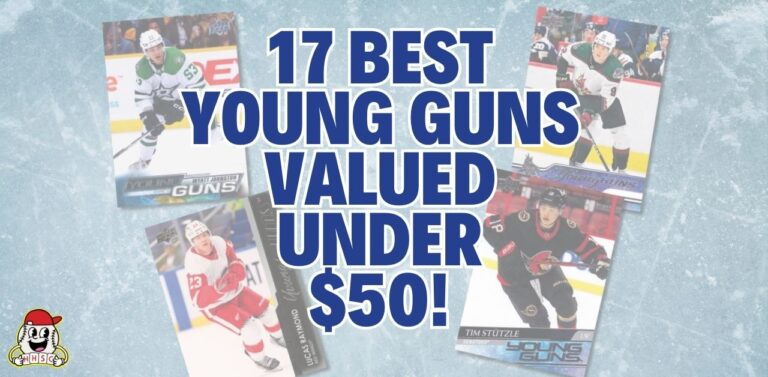Any sports card collector worth his weight in commons knows that Topps rookie cards are what most of us are seeking. But what MLB rookie eligibility? What’s a true rookie card? What’s the difference between Topps rookie cards or prospect cards? Why do some cards have Topps All-Star Rookie Cups, some have “Rookie Card” logos, …
Topps Rookie Cards, RC Logos & MLB Rookie Eligibility
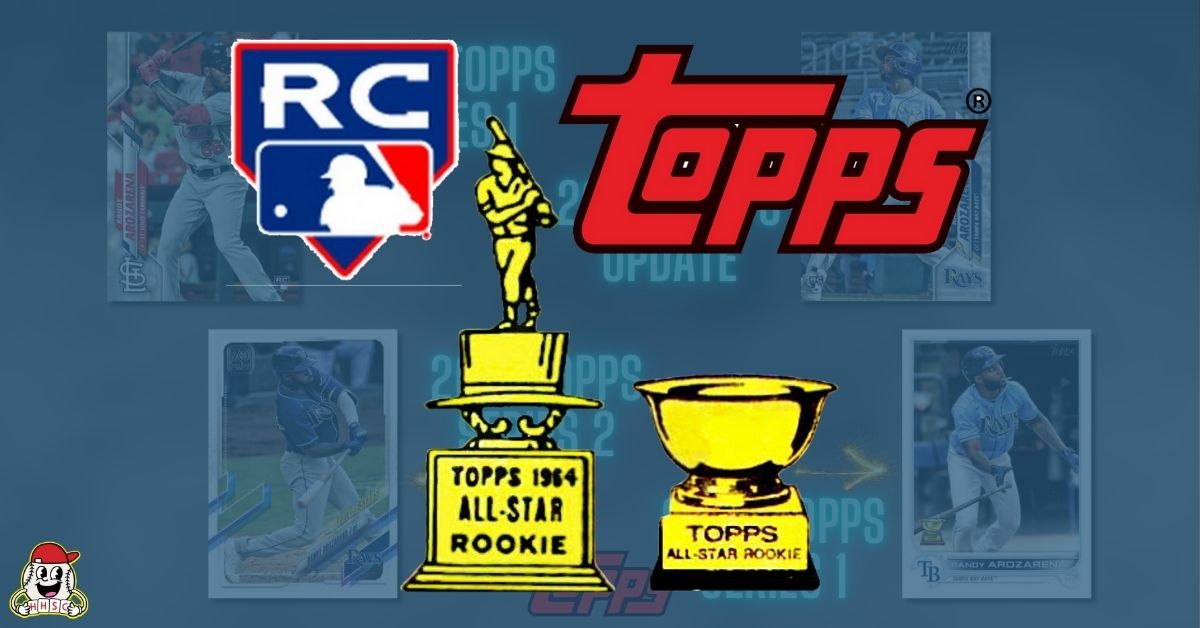
Any sports card collector worth his weight in commons knows that Topps rookie cards are what most of us are seeking. But what MLB rookie eligibility? What’s a true rookie card? What’s the difference between Topps rookie cards or prospect cards? Why do some cards have Topps All-Star Rookie Cups, some have “Rookie Card” logos, some have RC logos, some say Future Stars, and are 1st Bowman cards considered rookie cards, prospect cards or pre-rookie cards? Finally, why do some players have rookie status over several years!?!
We’re going to answer all those questions! I’ve done a lot of research on Topps rookie cards, so much so that I’ve created three very helpful articles for sports card collectors:
- Baseball: Who Are the Best Topps Rookie Cards From Each Baseball Set?
- Basketball: Who Are the Best Basketball Rookie Cards From Each NBA Season?
- Football: Who Are the Best Football Rookie Cards From Every NFL Year?
Most of the sports card links on this page will take you to eBay. That means I will get a commission on the sales from this page. If you end up buying from these links, I personally thank you for supporting my website! Even if you don’t buy anything, thank you for reading my article! Enjoy!
What is MLB Rookie Eligibility?
MLB rookie eligibility is a strange thing compared to other sports, where a player often becomes a rookie in his first year as a professional athlete.
With baseball, a player’s first professional season after high school, college or international play, usually comes in the minor leagues. But that is still not his Major League Baseball rookie season. From a baseball card collecting standpoint, he is still a prospect, which makes his 1st Bowman card attractive.
In baseball, MLB rookie eligibility expires after a hitter registers more than 130 at-bats in the majors, or a pitcher totals more than 50 innings pitched in the majors. However, MLB.com also notes this caveat that rookie eligibility is lost if the player has more than “45 total days on an active Major League roster during the Championship season (excluding time on the injured list).”
On September 1 of every non-pandemic MLB season, MLB rosters expand to 40 players, which usually coincides with the end of the minor-league season. That means a lot of baseball prospects get called up to the majors, which often allows Topps to produce their rookie card for the following season.
Topps Rookie Cards Before the ‘90s
If you look back over the history of Topps baseball cards, they often wouldn’t have rookie cards until a player’s second or third year in the majors. For instance, Brooks Robinson came up with Baltimore as an 18-year-old in 1955, but his rookie card didn’t come out until the 1957 Topps set.
Remember that in the early seasons of Topps, there weren’t as many cards on the checklist as they were in the ‘70s and beyond. A rookie would really need to stand out in order to make the checklist on any given season.
They eventually started to amend that issue when Topps created the multi-rookie card, which featured several players on one card. In 1962, they had the “Rookie Parade” cards, which listed five different prospects, like on Bob Uecker’s rookie card. In 1963, they went with just four players and called them “Rookie Stars” cards, like on Pete Rose’s rookie card.
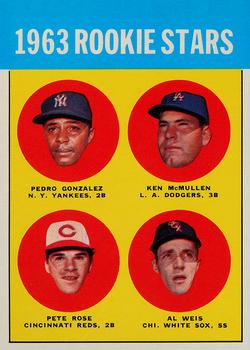
All card images come courtesy of BuySportsCards.com.
In 1964, Topps switched from showing promising rookies per position, and instead showed promising rookies per MLB team, using just a dual-player format, like on Phil Niekro’s “Rookie Stars Braves” rookie card.
Over the next couple decades, Topps would go up and down, from two to four players on featured rookie cards, and it would continue into modern cards. It was a way to get more players on their cards without making more cards.
What’s a True Rookie Card, and How is It Different From Prospect Cards?
A player’s true rookie card is his first fully licensed base card. Since Topps Flagship is considered the main set for Topps, which is the only license holder for both MLB and MLBPA, then a player’s first Topps flagship base card is considered his true rookie card.
Once a baseball player makes his major league debut, they become an MLB rookie and are no longer really considered a prospect. Of course, there are players who vacillate up and down, but from a cards perspective, the first card with a player in his pro uniform is his rookie card. Everything before that is considered a prospect card or minor-league card.
Why Do Some Cards Have Topps All-Star Rookie Cups?
Last year, I wrote about the history of Topps All-Star Rookie Cup Cards, and it really is an interesting story.
Starting in 1960, Topps started producing cards with the previous seasons’ best rookie players at each position (three outfielders and two pitchers). Willie McCovey’s 1960 Topps rookie card is the best from that initial 1959 Topps All-Star Rookie Cup team.

There were several seasons in the ‘70s and ‘80s when Topps continue to name the team, but inexplicably stopped printing those All-Star Rookie Cup logos on their cards.
Unfortunately, in many cases over the past 60-plus years, Topps All-Star Rookie Cup logos landed on cards the year after their rookie cards were produced.
Some of my all-time favorite cards with Topps All-Star Rookie Cups on a player’s second Topps card, includes:
- 1964 Topps Pete Rose
- 1968 Topps Rod Carew
- 1968 Topps Tom Seaver
- 1969 Topps Johnny Bench
- 1971 Topps Thurman Munson
- 1973 Topps Carlton Fisk
- 1976 Topps Gary Carter
- 1978 Topps Andre Dawson
- 1988 Topps Mark McGwire
- 1990 Topps Ken Griffey Jr.
- 1997 Topps Derek Jeter
- 2002 Topps Albert Pujols
- 2002 Topps Ichiro Suzuki
- 2007 Topps Justin Verlander
- 2008 Topps Dustin Pedroia
- 2009 Topps Evan Longoria
- 2009 Topps Joey Votto
- 2012 Topps Mike Trout
- 2013 Topps Bryce Harper
- 2014 Topps Nolan Arenado
- 2016 Topps Kris Bryant
- 2018 Topps Aaron Judge
- 2019 Topps Shohei Ohtani – Series 1 Hitting and Series 2 Pitching
- 2019 Topps Ronald Acuna
- 2019 Topps Juan Soto
- 2020 Topps Pete Alonso
- 2020 Topps Vlad Guerrero Jr.
- 2020 Topps Fernando Tatis Jr.
- 2022 Topps Randy Arozarena
- 2023 Topps Bobby Witt Jr.
- 2023 Topps Julio Rodriguez
When Did Topps Start Putting “Rookie Card” Logos on Cards?
In 2006, the MLBA hoped to make collecting rookie cards easier, so they decided that official rookie cards were only made after a player appeared on his Major League team’s 25-man roster.
When Did Topps Start Putting the Standard “RC” Logo on Cards?
In 2010, Topps changed their rookie card logo from the words to just the initials, “RC,” which it still uses today.
Why Do Some Topps Rookie Cards Say “Future Stars”?
In many cases, Future Stars is a rookie card of a player, like on multi-panel cards for players like Cal Ripken Jr. and Fernando Valenzuela. In 1987, Topps introduced cards with “Future Stars” written on it, for players like Bo Jackson and Rafael Palmeiro. In the former’s case, his rookie card came in the 1986 Topps Traded set, and for Palmeiro, that ’87 card was actually his rookie card.
In recent years, Topps puts the “Future Stars” label on super stars in the set following their rookie card year, which makes it their third year in the majors in many cases.
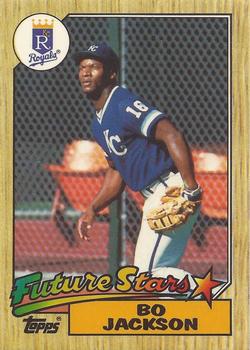
Are 1st Bowman Cards Considered Rookie Cards, Prospect Cards or Pre-Rookie Cards?
Yes. While 1st Bowman cards are a player’s first fully licensed card with Bowman, they’re also considered prospect cards and pre-rookie cards. But not all prospect cards or pre-rookie cards are considered 1st Bowman cards.
Why Do Some Players Have So Many Topps Rookie Cards?
In 2019, Randy Arozarena got 20 at-bats with the St. Louis Cardinals in his MLB debut season. He was traded in January of 2020 to Tampa Bay, but Topps had him set for the 2020 Topps Series 1 checklist already, in a Cardinals uniform.
In 2020, the baseball season was delayed until late July because of COVID-19, and Arozarena would notch 76 at-bats with the Rays in an abbreviated season.
In November, 2020 Topps Update was released, and Arozarena had a card in that series with him in a Rays uniform. So now he has two Topps cards – and he hadn’t yet exhausted his rookie eligibility, totaling just 96 MLB at-bats in two years.
The next summer, 2021 Topps Series 2 was released, and Arozarena got a Future Stars card in that set. At the end of the season, Arozarena was named the 2021 American League Rookie of the Year… in his third MLB season… after he had three Topps cards issued.
Arozarena’s 2022 Topps Series 1 card finally had a Topps All-Star Rookie Cup on it! That is four cards over four seasons, and he still barely had one full season’s worth of at-bats.
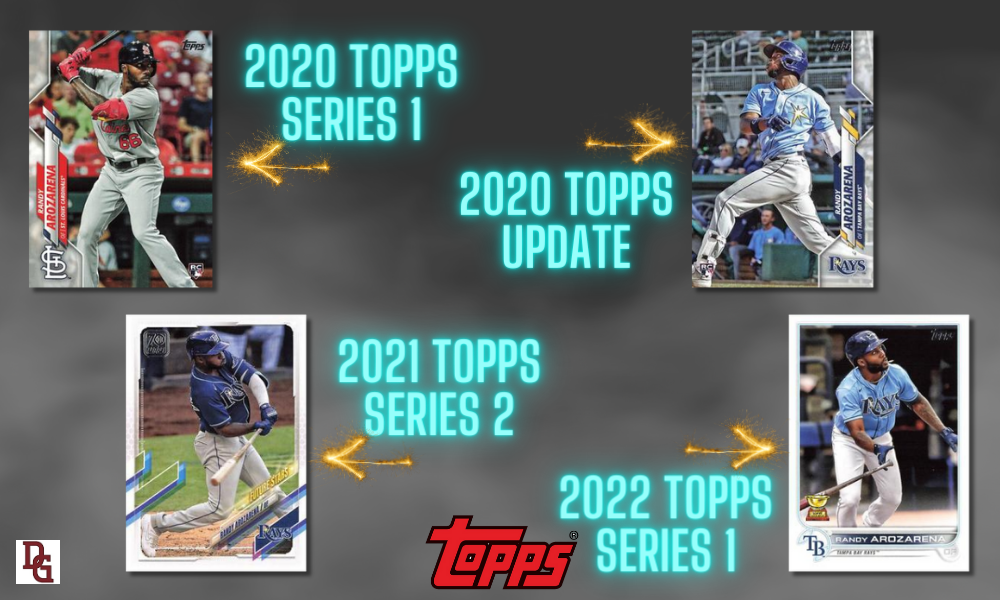
As you can see with Arozarena, there are plenty of reasons why a player might have what looks to be several Topps rookie cards in the same set over a few seasons.
- Baseball: Who Are the Best Topps Rookie Cards From Each Baseball Set?
- Basketball: Who Are the Best Basketball Rookie Cards From Each NBA Season?
- Football: Who Are the Best Football Rookie Cards From Every NFL Year?
Understanding Topps rookie cards over the past seven or so decades takes a little in-depth research, but once you know how it works, you’ll be able to maximize your baseball card collection for good!



